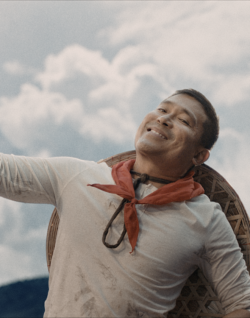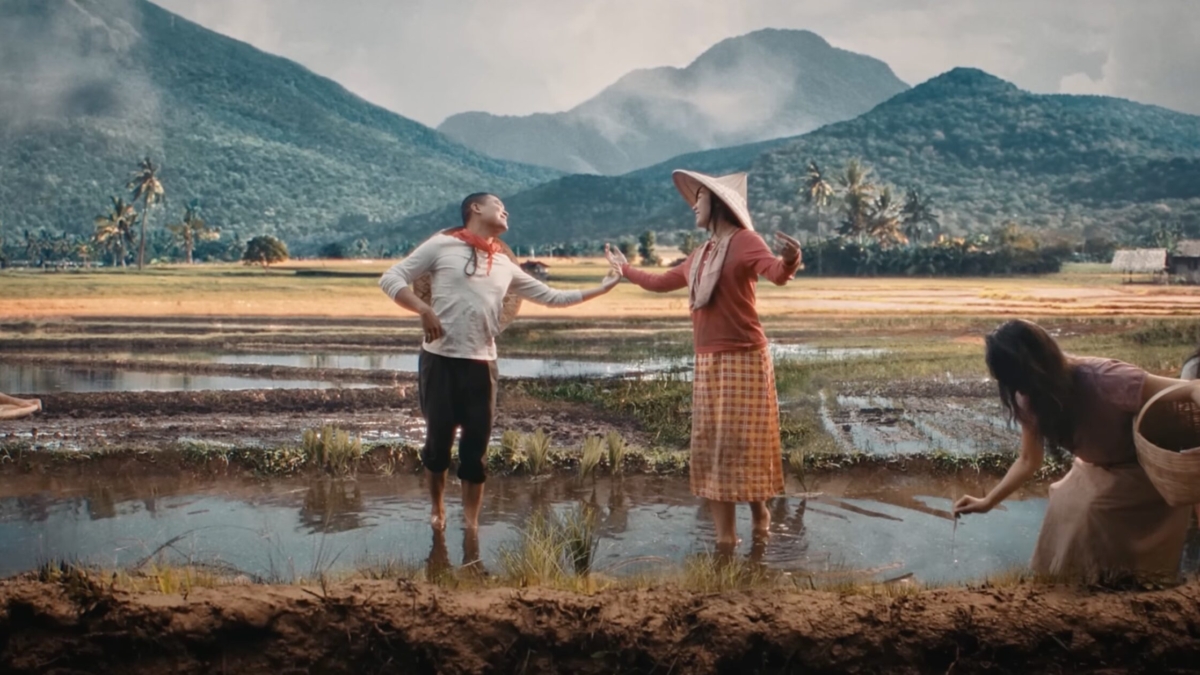An Immigrant’s Story Told Through Dance
Even the editing feels like a slow and perfectly punctuated tango in Ryan Moore’s award-winning short film “When We Danced” (2023). The flow of the opening and the magnificent visuals move together gracefully, transitions morphing and masking into the next shot and the camera movement so smooth and silky as to be almost invisible.
We follow a young Filipino, Manong Rommel (Darion Basco), as he and his wife Lily (Angeline Jara) navigate from working in the fields in the Philippines, to working in the United States. They grapple with war, the stresses of immigrating, and being the “other” in a new country. This flashback sets the tone for the modern day, where we are introduced to Michael (Jace Izuno) and his grandparents – the now much older Lolo Rommel (Thel Bringas) and Lola Lily (Nenita P. Domingo), and how their experience from the 1960s still revisits them, and Michael, today.
Denied the privilege of dancing in his youth because of his dark complexion and immigrant status, Rommel finds pleasure in teaching what he knows to his grandson. Though not wholly obvious that Rommel is enjoying these lessons (he grunts and chastises more than communicates support and understanding) we see him preparing excitedly and willing to show Michael the steps time and time again. There is a disconnect because of their age gap and their expectations for dancing, but there is love. Michael loves his Lolo Rommel and Rommel loves his grandson. Though teaching him dance is his only goal, Rommel inadvertently teaches Michael how to stand up for himself and grab what he wants with all the vitality of youth.
As thematically complete as this short is, the characters traveling from one emotional well to another, the narrative, just like its actors, are both a little more stilted as they lean into the second half. Just like Rommel is trying to teach Michael how to dance in the second half with less than stellar results, the filmmaking pulls some shots and places others in a less than fluid pacing. Their bouts of dialogue are short and dismissive and while the shots in this section are beautiful, it is not as romantically shot as the beginning.

(Image Credit: Ryan Moore/When We Danced)
The mesmerizing opening is like a movie trailer, well-timed, smooth, a glissando of images layered together. The second half is still beautifully shot, but it lacks the camera movement likened to a dance from the opening. Michael embodies what it means to be an awkward teenager and the gruffness of his Lolo Rommel echoes my short time with my grandparents as well.
At its heart, this short is about family and wanting to be the best version of yourself for them. The sacrifices we make, the stories we never tell, the lives we lived before expanding the nuclear family. This narrative is part of a larger tapestry of culture and community that has only begun to be discussed in Hollywood and in film at large, and the resounding love and support Moore received and the accolades he has collected is all the more convincing of a time where a Filipino American protagonist is not only welcome, but necessary.
This short was screened at USC and brought out a large crowd of Filipino and FilAms who were excited and hungry to see themselves on the screen. Representation is so important. Seeing yourself on screens that have been dominated by white, Anglican features for the past 100 years is a treat we’ve only been allowed to taste in the past decade with movements like #OscarsSoWhite and #StopAsianHate with the rise of Covid-19.
Yet demanding visual representation is just the first step. Well-written representation and the expansiveness of a crew with POC broadens the scope of just what Hollywood can become.
And that feels like something to dance about.
Watch “When We Danced” on YouTube:

